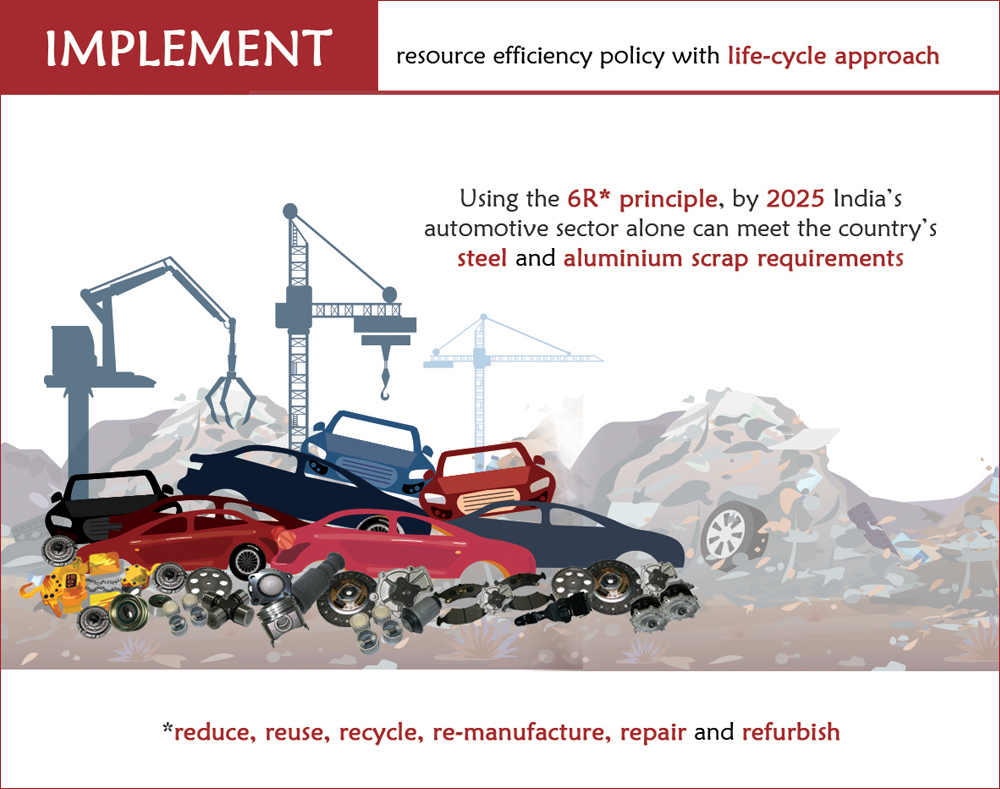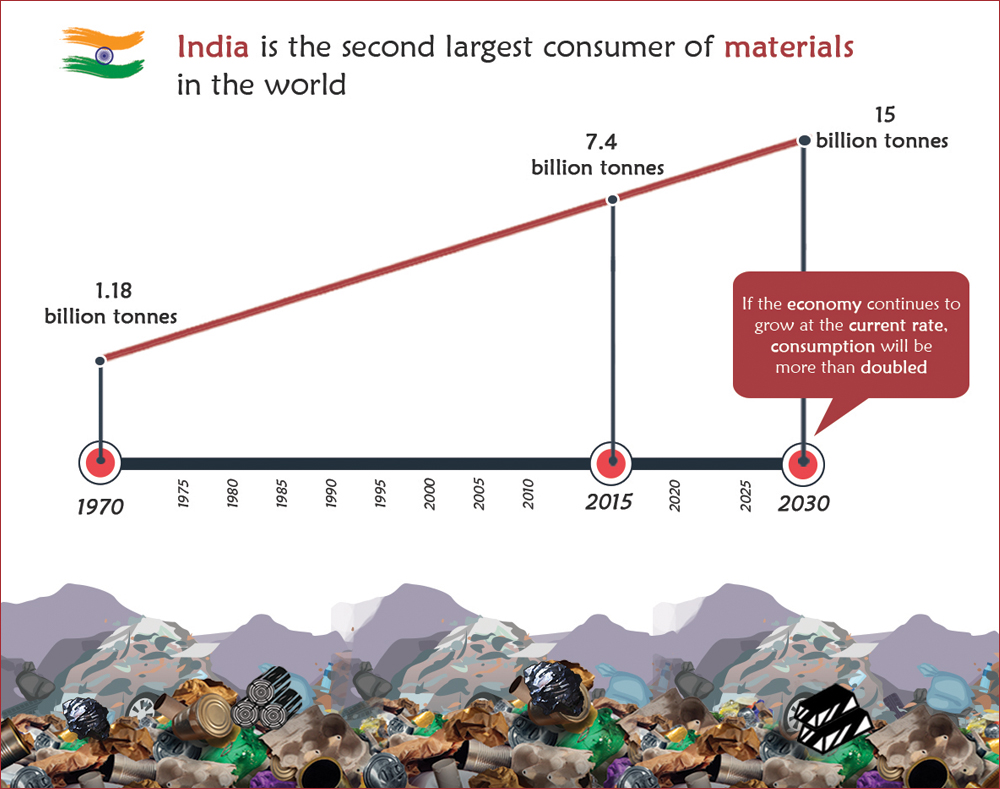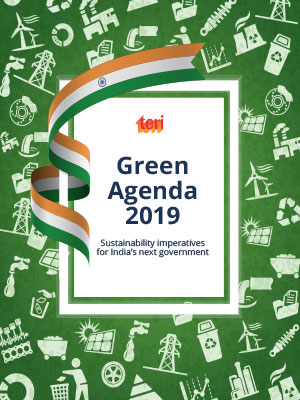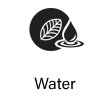Rising costs of accessing resources, shrinking geological availability, and risk of material exhaustion can be addressed with an integrated resource efficiency policy

Sustained high economic growth rates over the last two decades, growing population, and rising aspirations of a growing middle class is driving the demand for various natural resources in India. This is exerting ever increasing pressures on the environment and raising sustainability concerns. It is estimated that between 1970 and 2017, demand for natural resources such as mineral ores has increased from 1.18 billion tonnes to 7.4 billion, making India the world's second largest consumer of materials after China. Resource extraction per unit area in India is also one of the highest in the world at 1,579 tonnes/acre compared to the global average of 454 tonnes/acre.
With future economic growth, urbanisation and population, consumption of natural resources is bound to rise exponentially and may even reach 15 billion tonnes by 2030. Meeting this growing demand for materials will be a major challenge.

Rising costs of accessing resources, shrinking geological availability, the risk of material exhaustion, uncertainty with regard to long-term abundance and the social license to operate that arise from equity and distributional challenges and the associated uneven and unfair access to natural resources will all pose hurdles in meeting demand. Moreover, increased extraction of resource will have a detrimental impact on the environment and biotic resources. With India already a net importer of resources, dominated by fossil fuel imports and critical materials, import dependence can increase the vulnerability of the country's economy to global geopolitical and economic risks, apart from adversely affecting the trade balance.
An Integrated Resource Efficiency Approach is an ideal strategy towards realising the larger goal of circular economy. This is based on the 6R principle that optimises material consumption at every stage of the value change to make it circular. The 6Rs stand for Reduce, Reuse, Recycle, Redesign, Remanufacture, and Refurbish.
It is estimated that by 2025, India would be able to generate over 15 to 20 million tonnes of steel scrap and more than nearly 1.5 million tonne of aluminium scrap from the automotive sector alone. This is more than the current steel and aluminium scrap imported by India. Using the 6R principle, India's import dependence on these two can be brought down to zero, apart from saving a large amount of other material such as limestone, iron ore, etc.

Adopting a resource efficiency policy
Improving use of resources through adoption of a resource efficiency strategy will be key to India's sustained high growth and enhanced wellbeing. Resource efficiency encompasses a wide variety of technology, process, policy and institutional interventions along the product and service life cycle stages that typically include mining, design, manufacturing, consumption, and end-of-life. An absence of life-cycle thinking at the policy level often impedes exploring inter-linkages that can make India utilise resources more efficiently and unlock the associated benefits.
Resource efficiency is a cross-cutting issue involving several domains and policy levels. In such a political set-up, an institutional mechanism is extremely important that will facilitate, monitor and review the implementation of various policies and programmes across sectors and product life cycles and periodically propose necessary course correction measures.
An integrated policy on resource efficiency will help in establishing the right public thinking, thereby reflecting the government's commitment to facilitate the transition. Some of the elements of such a policy include –
- Prioritisation of sectors/materials for bringing about resource efficiency improvements
- Measuring improvements based on suitable indicators across various sectors
- A target-based approach across selected stages of life cycle for achieving productivity, recyclability, specificity of content of recycled materials in newer products, standards for recycled, reused, refurbished and remanufactured products, etc.
- Creating an enabling regulatory framework and innovative policy instruments that can attract interest from different industries and geographies
- Putting in place policies and economic instruments that can strengthen facilitation of the Resource efficiency transition and reduce transition cost
- Creating platforms for multi-stakeholder collaboration will result in the exchange of ideas and putting them into practice
These interventions should enable the creation of new business models that in turn can bring resource efficient products and services and ultimately create higher employment opportunities. Increased demand and consumer acceptance will provide economies of scale thereby reducing prices and facilitate the desired transition. Further, setting up of mandatory targets for recycled content and having an effective monitoring network will help to achieve the desired level of performance within set timelines.
This article is part of our Green Agenda series of recommendations on various topics of environmental importance. To see other recommendations, click on the icons below





